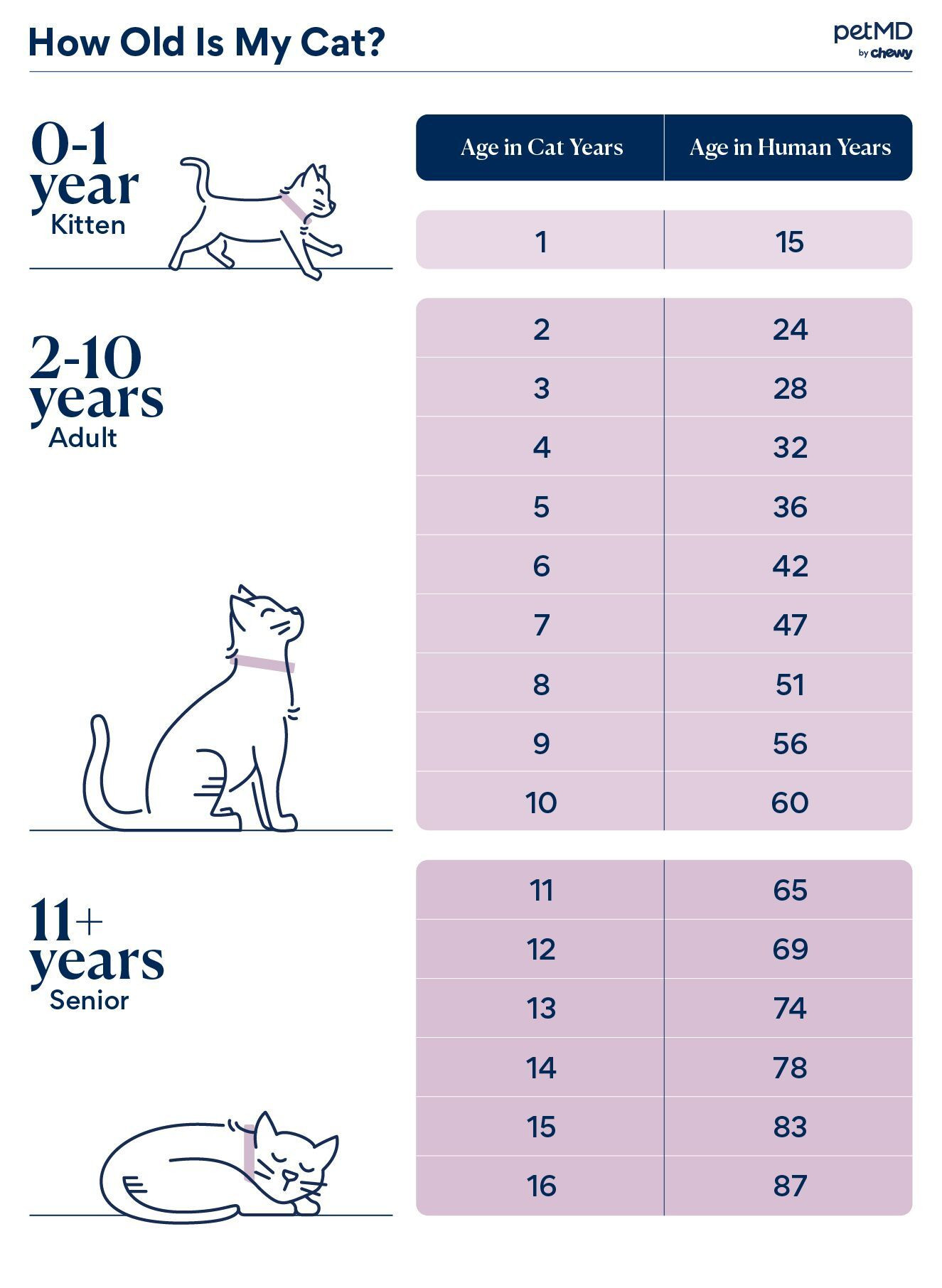Cat lovers often think of their feline friends as family members, and celebrating their birthdays is a natural part of pet ownership. However, the way cats age is quite different from humans, changing significantly throughout their lives. Understanding how to translate cat years into human years allows us to better grasp our cat’s life stage in relation to our own.
According to Dr. Mary Gardner, DVM, veterinarian and co-founder of Lap of Love Veterinary Hospice, “Converting cat years to human years allows us to compare our cat’s aging process and our own. Just like humans in their senior years might face mobility challenges, a cat aged 11 or older – equivalent to 60 human years – may experience similar struggles.”
So, how can you accurately calculate your cat’s age in human years to ensure they receive the best possible care at every stage of life?
Key Insights into Cat Aging:
- In their first year, cats age rapidly, reaching approximately 15 human years.
- Breed differences have minimal impact on a cat’s aging rate.
- Veterinarians have several methods to estimate a cat’s age, particularly useful for adopted cats with unknown birthdates.
Cat Years vs. Human Years: It’s Not a Simple Calculation
Forget the myth that one cat year equals seven human years. Determining your cat’s age in human years is more nuanced than simple multiplication.
The American Veterinary Medical Association (AVMA) highlights that cats experience rapid aging in their early years. A cat’s first year is equivalent to about 15 human years, and by their second year, they reach approximately 24 human years. After the first two years, the aging process slows down slightly. Cats then age at a rate of about four human years for each subsequent cat year.
Regardless of breed, cats generally age at a comparable pace. This makes age charts and guidelines broadly applicable to all domestic cats.
A Handy Cat Age Chart: Find Your Cat’s Human Age
To simplify the conversion, refer to this cat age chart to quickly estimate your feline friend’s age in human years.
 A infographic chart detailing the age conversion of a cat, showing that 1 cat year is 15 human years, 2 cat years is 24 human years and each subsequent cat year is about 4 human years
A infographic chart detailing the age conversion of a cat, showing that 1 cat year is 15 human years, 2 cat years is 24 human years and each subsequent cat year is about 4 human years
Determining Your Cat’s Age When You’re Unsure
Many cat owners adopt their feline companions, often without knowing their exact birthdate. Instead of a traditional birthday, a “gotcha day” is often celebrated. However, understanding your cat’s approximate age is crucial for providing age-appropriate care. Veterinarians are skilled at estimating a cat’s age through various indicators. These methods include:
- Teeth Examination: A kitten’s baby teeth erupt at predictable times, and adult teeth follow. The wear and tear on teeth can also indicate age in older cats.
- Eye Examination: The lens of the eye can become denser with age. While not precise, changes in the iris can offer clues.
- Coat Condition: Younger cats typically have softer, finer fur, while older cats may have coarser, thicker, or even graying fur.
- Muscle Tone and Body Condition: Younger cats are usually more muscular and lean. Older cats may lose muscle mass and have a more bony appearance.
Cat Lifespan: Living Longer, Healthier Lives
Thanks to advancements in veterinary medicine, better nutrition, and the strong bonds between cats and their owners, cats are now living longer than ever.
“The average lifespan for a cat is around 12 to 15 years. Purebred cats tend to live slightly shorter lives, averaging about 12.5 years, while mixed-breed cats often live a bit longer, around 14 years,” explains Gardner.
Understanding your cat’s age in human years is more than just a fun fact; it’s essential for providing tailored care throughout their lives. Knowing whether your cat is a kitten, adult, mature, or senior allows you to adjust their diet, veterinary care, and home environment to best suit their needs at each life stage, ensuring they live a happy and healthy life by your side.
Featured Image: iStock/Drazen_
